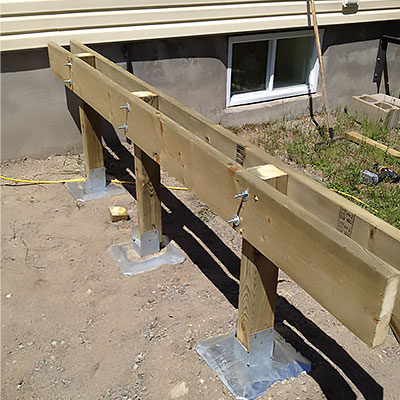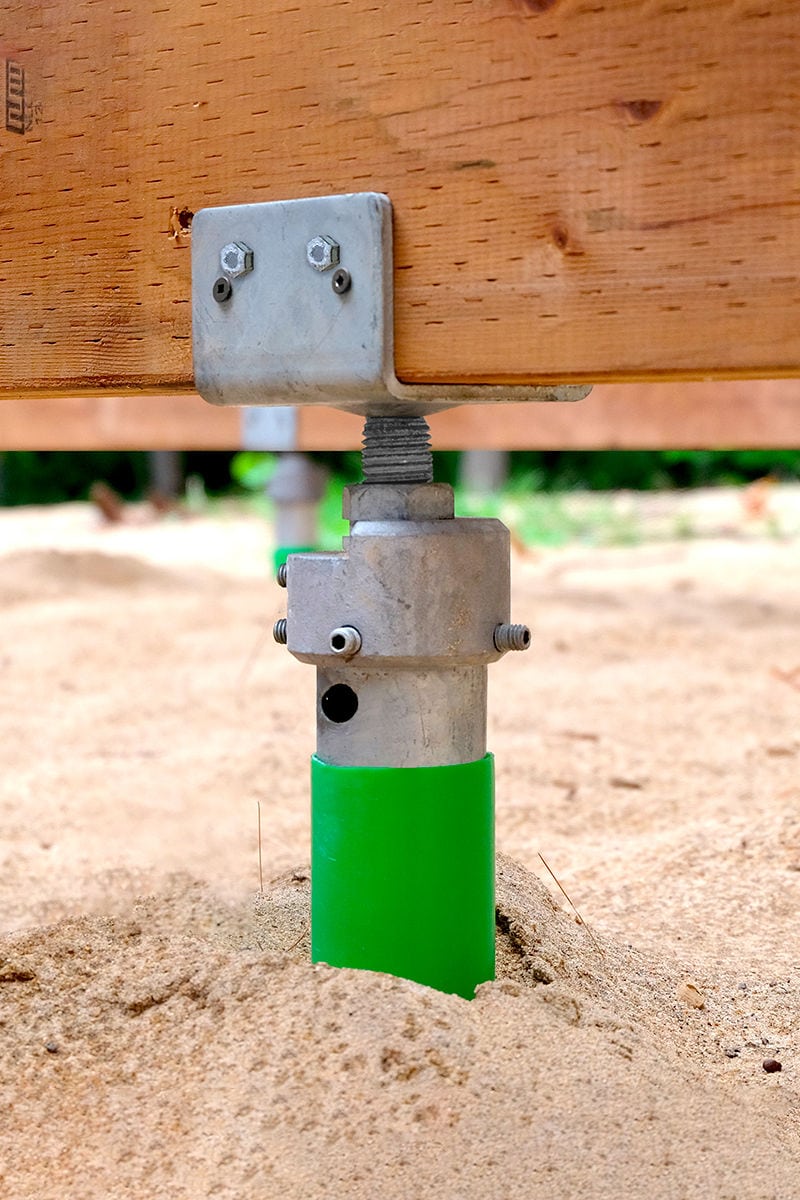Professional Tips for Setting Up Deck Footings to Support Your Outdoor Room
When it pertains to building a deck, one of the most crucial aspects to take into consideration is the setup of correct footings. These footings are the structure whereupon your exterior space will certainly relax, offering stability and assistance for many years to find. What exactly does it take to mount deck grounds correctly? In this discussion, we will explore professional tips and strategies that can help guarantee a resilient and successful deck setup. From picking the appropriate kind of footings to preventing typical blunders, we will certainly give you with the understanding and insights you need to confidently embark on your deck-building trip. Allow's dive right in and uncover the trick to a durable and strong outside area.
Significance of Proper Deck Grounds
Proper deck grounds are vital for ensuring the security and long life of your exterior space. Without solid and effectively set up footings, your deck might come to be unsteady, leading to safety and security threats and costly fixings.

In enhancement to stability, correct deck grounds likewise add to the long life of your outside space (Deck Footings). Footings that are designed and created to stand up to the aspects and soil problems in your location will help stop the deck from changing or clearing up in time. By making certain the grounds are correctly sized and installed, you can lessen the risk of damage to the deck framework, expanding its lifespan and lowering the requirement for costly fixings or replacements

Picking the Right Kind of Grounds
When picking the suitable kind of grounds for your deck, it is vital to take into consideration factors such as dirt problems, neighborhood structure codes, and the total layout of your outside room. The sort of footing you pick will certainly play a crucial function in making sure the stability and long life of your deck.
One typical sort of ground is the concrete ground. Concrete footings appropriate for many dirt conditions and supply superb assistance for decks. They are generally installed listed below the frost line to stop changing and settling due to freezing and thawing cycles. One more choice is helical piers, which are excellent for locations with unstable dirt or high water tables. These piers are screwed into the ground and offer strong support for the deck.
In some cases, you might require to utilize specific footings, such as stack grounds or deep structures, if you are constructing a huge or multi-level deck. These grounds are developed to disperse the weight of the deck over a larger area, guaranteeing stability and avoiding sinking or clearing up.
Before choosing a kind of footing, it is vital to speak with local building ordinance and laws to ensure conformity. Furthermore, consider the layout and planned use your outside space. Variables such as the dimension, shape, and load-bearing demands of your deck will affect the kind of footing that is most suitable.
Preparing the Ground for Footing Installment
To properly prepare the ground for footing setup, it is vital to evaluate the soil problems and take required steps to guarantee stability and durability of the deck. official statement The very first step is to excavate the area where the grounds will certainly be installed.
Once the location has been excavated, the next action is to small the dirt. This can be done making use of a plate compactor or by making use of a hand meddle. Compacting the dirt aids to eliminate any type of gaps or air pockets, which can result in resolving and instability in time.
After compacting the soil, it is vital to lay a layer of gravel or crushed stone at the bottom of the excavation. This will provide drain and aid to avoid water from pooling around the footings, which can bring about erosion and instability.
Step-by-Step Guide to Setting Up Deck Footings
After appropriately preparing the ground for footing installment, the following step is to begin the process of setting up deck footings. This step-by-step guide will supply you with a clear understanding of exactly how to set up deck grounds for your outside area.
Figure out the area: Begin by noting the positions of the deck footings using stakes and string. Ensure that the locations straighten with the style and layout of your deck.
Dig the holes: Use a post opening digger or an auger to dig the holes for the grounds. The deepness and diameter of the openings need to remain in conformity with regional structure link codes and the specific requirements of your deck layout.
Degree the holes: Utilize a level to guarantee that the holes are dug to the proper deepness and are degree with each other. (Deck Footings)
Add gravel: Area a layer of crushed rock at the base of each hole to enhance drain and avoid the wood from rotting.
Put the footings: Position the grounds right into the holes, making sure they are level and plumb. Make use of a level and a determining tape to ensure accuracy.
Protect the footings: Put concrete into the openings around the grounds, loading them to the top. Make use of a post degree to guarantee the grounds continue to be degree as the concrete sets.
Permit time for treating: Allow the concrete cure according to Recommended Site the supplier's directions before continuing with the deck building.
Usual Mistakes to Stay Clear Of During Footing Installment
One essential element to consider during the installment of deck footings is staying clear of common mistakes that can jeopardize the stability and durability of your exterior area. While deck footings might feel like a basic and straightforward part of the building process, ignoring certain factors can lead to expensive repairs and prospective safety and security risks down the line.

Furthermore, disregarding to set up correct drain actions can trigger water to gather around the footings, bring about rot, decay, and the eventual weakening of the deck's structure. Furthermore, utilizing the incorrect type of footing material or failing to appropriately safeguard the footings can jeopardize their architectural stability.
To avoid these errors, it is important to speak with an expert or comply with industry guidelines to make sure correct footing installation. By doing so, you can guarantee the security and longevity of your exterior space, offering a satisfying and safe setting for many years to find.
Final Thought
To conclude, installing proper deck grounds is crucial for the stability and durability of your outside room. By picking the appropriate sort of footings and appropriately preparing the ground, you can ensure a solid structure for your deck. Following a step-by-step guide and avoiding common mistakes throughout footing installment will even more improve the longevity and safety and security of your deck.
Correct deck grounds are essential for guaranteeing the stability and long life of your exterior area. The grounds offer as a connection between the deck and the ground, allowing the weight of the deck and its owners to be dispersed evenly right into the soil.One common kind of ground is the concrete ground. Place the grounds: Put the grounds right into the holes, making sure they are level and plumb. Safeguard the footings: Pour concrete into the holes around the grounds, filling them to the top.
Comments on “From Idea to Concrete: The Important Role of Deck Footings in Sturdy and Safe Decks”